
When you think of recycling, your mind might immediately go to paper or cans, but did you know recycled construction and waste materials play a strong part in pavement design in Melbourne as well?
Pavement is everywhere, from our sidewalks and personal driveways to roads, construction platforms and rail trails. Expanding cities are constantly creating new pavement, and all those materials need to come from somewhere, which is why using older ones can be such a benefit.
Using recycled materials in our pavement design services is a speciality of SITE Geotechnical. In fact, rehabilitating pavements using these materials can save your project a substantial amount of money. This blog will explore everything you need to know about using recycled materials to create new or restore existing pavements, as well as how the team at SITE Geotechnical can help you.
If you’re unfamiliar with these terms or what the differences are between them, here is a quick rundown of each:
The term ‘pavement design’ refers to the planning, testing and research that goes into creating new pavements. Pavement design will involve many different steps, from using pavement computer modelling to assist with its design planning to pavement investigations to test the existing pavement materials (for existing roads) and test the soil and underground conditions of an area where pavement is going to be created.
The term ‘pavement rehabilitation’ (which can include ‘pavement stabilisation’) refers to the act of adding new materials to old pavement to make it stronger and whole again. This often involves a lot of testing to see how the damage and weakening have occurred, followed by a rehabilitation process using new or recycled materials to restore the pavement or increase its original design life.
Stabilising pavement can give it the following benefits:
By rehabilitating your pavement, you can save money down the line on having to replace the entire surface, and instead extend the life of your pavement. In Australia, most roads are designed for a 20-year lifespan. However, many exceed this duration. Increased traffic and other factors can sometimes necessitate early interventions to mitigate accelerated deterioration.
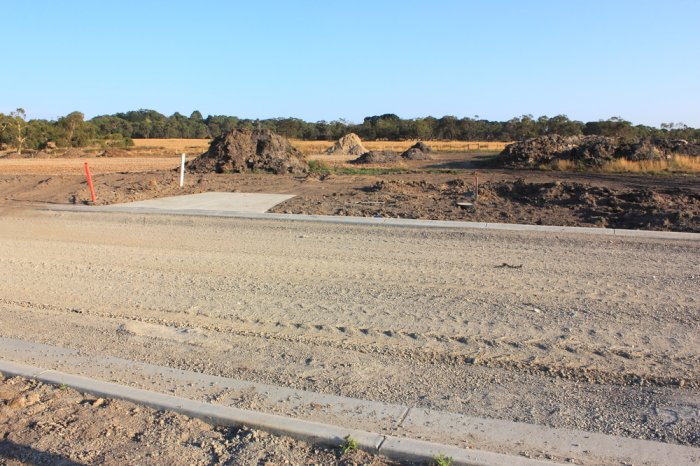
By using recycled materials in our pavement design and rehabilitation services, you can reduce the need for mining raw materials and at the same time, reduce the amount of old materials making their way to landfill.
Many of these materials can be collected from worksites where they would otherwise have gone to landfill. Here is a list of commonly recycled materials and how they can be used in pavement design and other types of construction projects.
This is sourced from infrastructure construction activities and demolition works. Once any contaminants have been removed, the old concrete is crushed and screened to resemble that of conventional crushed rock with the added benefit of some residual cement that improves the mechanical interlock. You’ll commonly see crushed concrete used in unbound granular pavements, footpath bedding, kerbs, retaining walls, drainage systems and platforms.
You can find this material sourced from the glass bottles and jars that make their way into home and commercial recycling bins. To process glass, any contaminants will first be removed. The glass pieces are then crushed to the required size of ‘glass fines’, which are small pieces only a few millimetres long. Glass fines can be used as a replacement for sand in asphalt mixes, in concrete paving, as a supplement in crushed rock mixes and to help make reflective markings on roads.
This material is collected when old oxidised asphalt is removed or during upgrading works from an existing pavement. After it has been screened and crushed, it can be used to make new asphalt. It can also be used to make other materials, but this will depend on the amount of RAP and the type of mix.
Crumb rubber is made when tyres at the end of their life cycle are recycled. Any remaining cord and steel in the tyre are removed, leaving a crumbly rubber that can be used for many different things. You will see crumb rubber used for some asphalt mixes, spray sealing, shared user paths, permeable pavement, retaining walls and for traffic calming devices like speed humps, wheel stops and bollards. We have even seen these types of materials in running tracks and horse training facilities.
Sourced from construction sites and demolition zones, crushed brick is cleaned, broken down and screened before use. You’ll see this material used as a supplementary material in crushed rock blends and in treated pavements. We have also seen this type of material being successfully used as a subgrade improvement layer in areas that have weak subgrade support. So next time you have a demolition project, call us to look at using the bricks and concrete from your project to see how they may be used to support your new development or structure.
These include waste products like fly ash, ground granulated furnace slag and amorphous silica. Once it has been treated, SCMs can be used to replace a specific proportion of cement in concrete mixes or as a binder in the pavement stabilisation process.
This by-product of steelmaking can be produced by melting scrap steel or refining crude iron in an oxygen converter. You’ll see slag aggregate used as a fill material in earthworks, in crushed rock mixes used for low-traffic bases and subbases, and as a granular filter material in subsurface drainage. One example that comes to mind is the Portland Aluminium Smelter, where slag was used to create a hardstand for storage.
Scrap steel can be melted down and cast into sections to be rolled into a variety of products and used as steel mesh, in road safety barriers and in energy-absorbing bollards.
The plastic used in pavement design is sourced from industrial, municipal and commercial waste. To make it into a material we can use, it needs to be sorted into categories, shredded and granulated, cleaned, dried, decontaminated, pelletised and then reformed. After all this, the new material can be used in asphalt, geotextiles, as aggregate in concrete and traffic management divides like bollards.
Every material offers its own benefits and challenges, but the potential benefits of using them make the necessary research and refining processes worthwhile.
Why bother using recycled materials for pavement design over fresh ones? There are many great reasons, including:
Whether you’re concerned about protecting our natural resources or want to keep costs low on your project, recycled materials are a smart and effective resource to take advantage of.
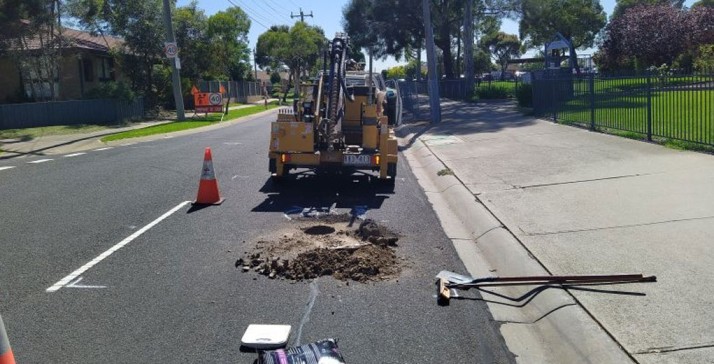
Are you interested in learning more about the benefits of recycled materials for your pavement upgrades and rehabilitation? The experts at SITE Geotechnical are here to help. We have been providing all sorts of geotechnical services since 2005, including pavement design in Melbourne, which has helped save millions of dollars.
Our pavement design services include:
Get in touch online for a free quote regarding your needs for pavement design services, or speak to a staff member directly by calling 1300 557 260. We can also help with other geotechnical services like groundwater assessments, distressed building investigations and soil material sampling.
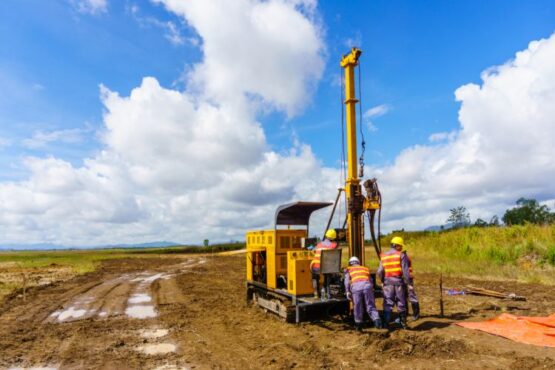
A successful building project starts with the soil foundation. Learn why conducting a geotechnical survey before construction is crucial for stability and efficiency.

You may not think much about the pavement beneath your feet, but a great deal of planning and preparation goes into the design, creation and laying of pavement. Pavement design in particular needs a lot of careful thought, as it is used in critical infrastructure projects such as the building of major highways, warehouses, large […]
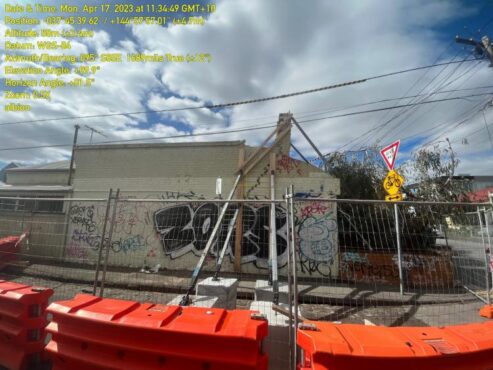
Have you noticed cracks in the walls or ceiling of a building? Are your doors or windows no longer closing easily? Small cracks are no cause for alarm, but larger ones are the signs of a distressed building, and the underlying cause needs to be looked into straight away. A distressed building will need more […]
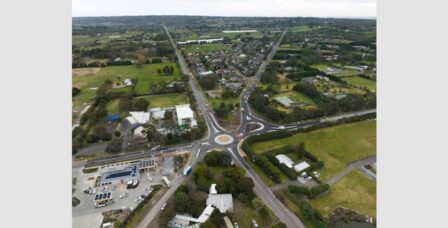
Having the right or wrong pavement design can make millions of dollars difference in a project. That’s why it’s so important to do your pavement design correctly the first time around, and this includes choosing the right team of pavement engineers for the job. Pavement design is about more than footpaths–it actually influences all kinds […]

Geotechnical site investigations often involve the use of a drilling rig in a wide and open space, but what if the areas you are trying to work on have size or access constraints? In these circumstances, you’ll need access to geotechnical drilling technologies that can work for both small and large-scale infrastructure projects. This is […]

At Site Geotechnical, we understand that wetlands play an essential role in land development projects across the country. While most of our clients are already familiar with their environmental benefits, such as flood mitigation and water quality improvement, our focus is on the geotechnical considerations that can help wetlands perform reliably and sustainably. Let’s discover […]

In the midst of planning a construction project? Whether you’re building a road, a bridge, a commerce centre, or a dam, the earth you’ll be working with can have a profound impact on the success of your project. Geotechnical services consist of many different types of studies and tests on a particular site that delve […]

For two decades, SITE Geotechnical Pty Ltd has been at the forefront of geotechnical engineering, providing expert investigations and recommendations that ensure strong, lasting foundations for infrastructure and development projects. Our journey from a small consulting firm to a leading geotechnical service provider in Victoria has been defined by innovation, expertise, and an unwavering commitment […]
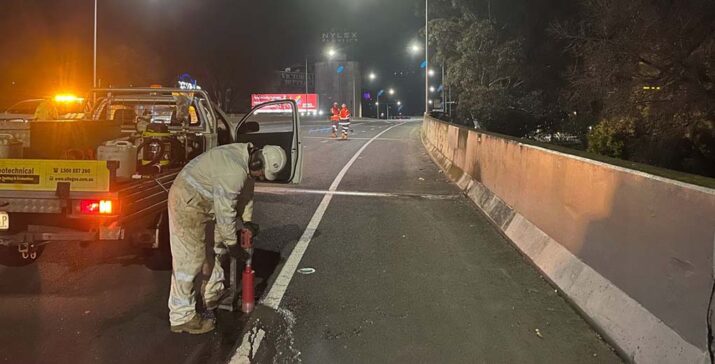
In the world of infrastructure, maintaining and upgrading pavements is a constant challenge. Victorian roads endure heavy traffic, harsh weather, and can simply wear down over time, often leading to deterioration that demands action. Historically, a full reconstruction—ripping out old pavement and starting fresh—has been the go-to solution. But there’s a smarter, more sustainable alternative: […]